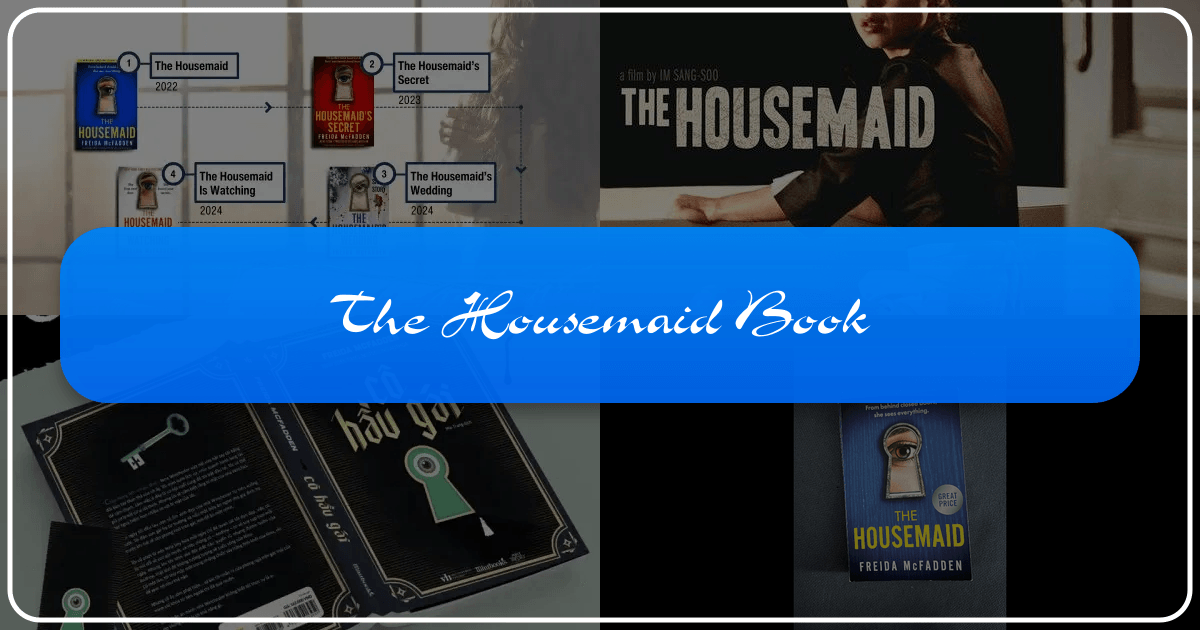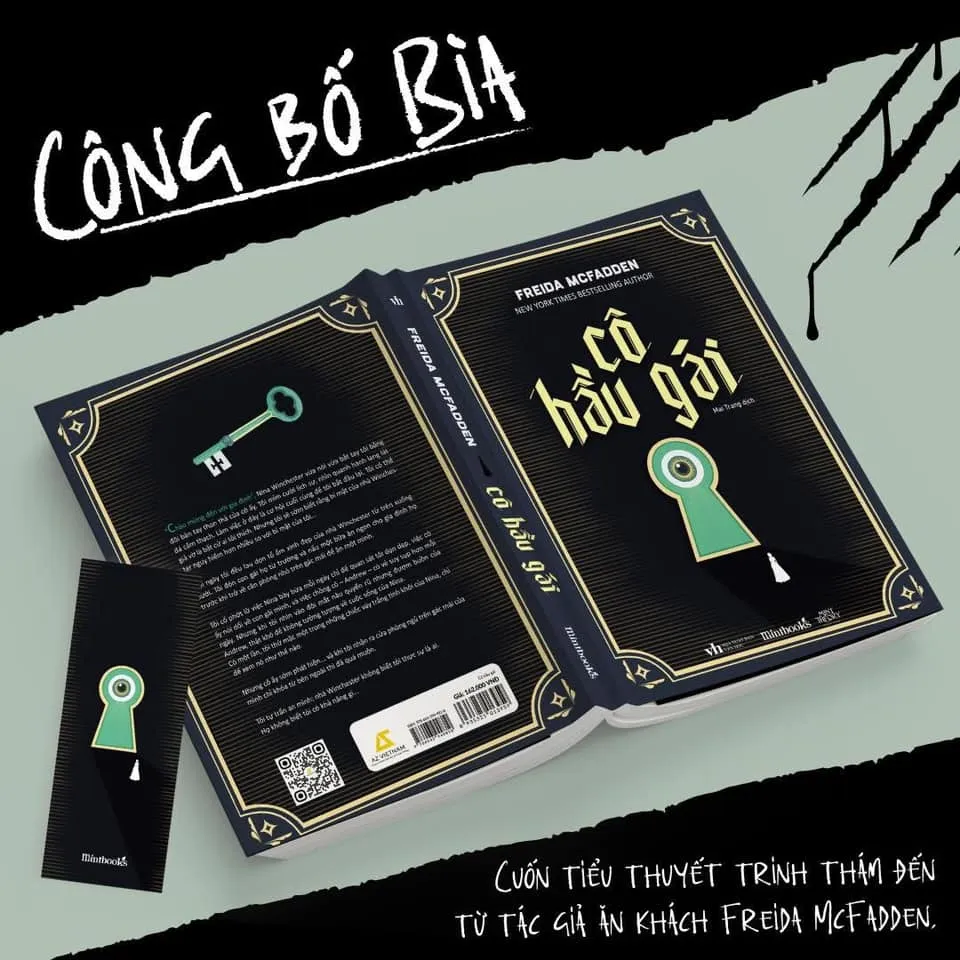The Housemaid: A Deep Dive into Freida McFadden's Psychological Thriller

Freida McFadden’s “The Housemaid” has captivated readers with its suspenseful plot and intriguing characters. This exploration delves into the novel’s various aspects, analyzing its themes, characters, and overall impact within the context of broader literary discussions. We’ll examine the book through the lens of several key topics: genre classification, authorial style, the educational value of the narrative, and its cultural influence.

Genre and Literary Classification
“The Housemaid” firmly resides within the psychological thriller genre. It shares characteristics with other popular domestic thrillers, incorporating elements of suspense, mystery, and psychological manipulation. The narrative unfolds through the perspective of Millie, the housemaid, creating a close, intimate perspective that amplifies the suspense and keeps the reader guessing. The novel’s focus on a seemingly idyllic setting masking dark secrets contributes to its psychological tension. It utilizes classic thriller tropes – unreliable narrators, hidden identities, and shocking plot twists – to maintain reader engagement. While not strictly a literary classic in the traditional sense, its popularity and widespread discussion place it firmly within contemporary bestsellers and new releases. Many reviews compare its style and suspense to works by authors like Ruth Ware and Lisa Jewell, highlighting its place within a specific subgenre of popular psychological thrillers.

Comparing “The Housemaid” to other Thrillers
Many readers and critics draw parallels between “The Housemaid” and other prominent thrillers. Some cite similarities with Ruth Ware’s works, noting the suspenseful atmosphere and unreliable narrators. The themes of secrets and hidden identities are also reminiscent of Lisa Jewell’s novels. Comparisons to “Verity” by Colleen Hoover are common, pointing to the gripping psychological elements and shocking revelations within both narratives. The unexpected twists and turns mirror the unpredictable nature of popular thrillers like “Gone Girl” and “The Wife Between Us.” However, some critics highlight the novel’s distinctive dark humor as a differentiating factor, setting it apart from other, more purely suspenseful works within the genre.

Authorial Style and Inspiration
Freida McFadden’s writing style in “The Housemaid” is characterized by short, sharp chapters, designed to maintain a rapid pace and heighten suspense. The narrative is predominantly told from Millie’s first-person perspective, offering an intimate view into her thoughts and feelings. This first-person narration contributes to the unreliable nature of the story, adding another layer of intrigue. The narrative voice is also described by some as somewhat simplistic, occasionally bordering on “dear diary” style, which while not sophisticated, enhances the immediacy and accessibility of the narrative. While her background as a practicing physician is apparent in other works, this novel’s focus is squarely on the psychological thriller, rather than incorporating elements of medical knowledge or expertise.
Freida McFadden’s Body of Work
McFadden’s writing career encompasses multiple successful psychological thrillers, establishing her position within the popular fiction landscape. “The Housemaid” stands out due to its immense popularity and critical discussion, but her other works also share similar stylistic elements: a focus on suspense, intriguing characters, and well-paced plotting. The recurring theme of seemingly ordinary settings hiding dark secrets underscores her focus on psychological tension and character development. The level of dark humor varies across her books, demonstrating her willingness to experiment with different narrative approaches and tones within the thriller genre.
Educational Value and Life Lessons
While primarily a work of entertainment, “The Housemaid” offers opportunities for reflecting on several themes. The narrative presents a commentary on class disparity and the vulnerabilities of those struggling economically. Millie’s desperate search for employment, coupled with the deceptive allure of the Winchester household, underscores the exploitation and manipulation that can occur in such situations. The exploration of psychological manipulation and gaslighting offers an indirect form of education regarding unhealthy relationships and the importance of setting boundaries. The novel’s depiction of damaged characters also invites discussions about mental health and the need for support. The consequences of unchecked ambition and the pursuit of revenge are also explored, prompting contemplation about moral responsibility and the importance of making ethical choices.
Life Lessons Embedded in the Plot
The consequences of Millie’s actions and the repercussions faced by the Winchester family offer valuable, though fictional, life lessons. The narrative highlights the dangers of unchecked ambition and the potential for drastic consequences when pursuing revenge without considering ethical implications. The exploration of psychological manipulation serves as a cautionary tale about the importance of recognizing and avoiding such dynamics in personal relationships. The narrative’s exploration of mental health issues in some characters, though presented within a fictional context, prompts discussion and awareness concerning mental well-being. Ultimately, the novel’s complex plot raises ethical questions about the characters’ actions and their motivations, encouraging readers to consider the broader consequences of their own decisions.
Libraries and Accessibility
“The Housemaid” is widely available in various formats through both physical and digital libraries. Public libraries are likely to stock copies of the novel, ensuring accessibility for a broad range of readers. E-book and audiobook versions are also accessible through digital libraries and online retailers, widening its reach beyond traditional booksellers. The popularity of the novel has ensured its inclusion in many public and private collections, while its digital availability enhances accessibility for readers who prefer alternative formats.
The Role of Libraries in Promoting Reading
Libraries play a crucial role in increasing access to literature for a wide audience. Their presence in communities ensures widespread availability of popular titles such as “The Housemaid”, promoting reading habits and fostering literary appreciation. The availability of digital formats complements physical libraries, further extending the reach of the novel to readers who might not have easy access to physical books. Libraries contribute significantly to the cultural impact of a book by making it accessible to a broader audience, regardless of socioeconomic status or geographic location.
Cultural Impact and Literary Influence
“The Housemaid” has achieved notable cultural impact, primarily due to its online popularity on platforms like TikTok and Instagram, fueling significant discussion and interest in the novel. The book has garnered considerable reader interest, as reflected in its bestseller status and high ratings on platforms like Goodreads. The success of the novel has subsequently led to a film adaptation, further expanding its reach beyond the book readership. This widespread engagement signifies the novel’s cultural penetration and its ability to resonate with diverse audiences. The discussions generated around the novel and its themes contribute to broader conversations about contemporary anxieties, relationships, and societal issues.
Adaptations and Further Reach
The film adaptation of “The Housemaid”, starring prominent actors like Amanda Seyfried and Sydney Sweeney, significantly broadens the story’s cultural reach. This adaptation introduces the narrative to a new audience, those who may not typically engage with books but who appreciate film. The film’s release will further amplify conversations and discussions surrounding the book’s themes and plot points. The potential for future adaptations and derivative works further emphasizes the enduring cultural impact of McFadden’s novel. The widespread online engagement, coupled with the film adaptation, suggests “The Housemaid” is poised to maintain a substantial presence in popular culture for the foreseeable future.
This comprehensive analysis demonstrates that “The Housemaid,” while categorized as a contemporary psychological thriller, offers diverse layers for discussion and exploration. Its accessibility, popularity, and subsequent film adaptation solidify its impact within the broader literary and cultural landscape.